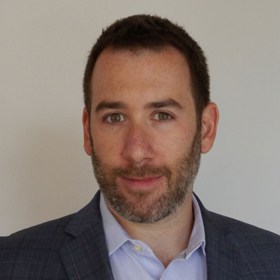Jan 3
2023
Can Public Health Really Be Consumer Friendly?

By Brian Yarnell, president and co-founder, Bluestream Health.
I’m a grown man who’s afraid of needles. Yes, that’s an inconvenient fear in the time of vaccines and booster shots. This irrational dread plagued me when I scheduled my Covid vaccine. I hoped to at least book an appointment at a pleasant urgent-care clinic that would soothe my nerves. Or perhaps a modern retail pharmacy that offered easy online scheduling.
But the only appointment I could get was at NYC Health+Hospital’s Coney Island Hospital in New York.
I didn’t expect much. It’s public health, after all. So, when I walked into the hospital, anticipating dingy hallways staffed by soulless zombies, I was shocked to be greeted by friendly and helpful staff who admitted me—right on time—to a modern and clean facility. The nurse administering my vaccine couldn’t have been more supportive.
I walked away a changed man—slightly less afraid of needles, and with a different perspective on public health. Somehow, the largest public health provider in the country managed to capture my initial visit and create a customer for life. How? This public health organization had started viewing patients as consumers, much like its private, national counterparts.
It made me think: If NYC Health+Hospitals can do it, surely more public health providers can make their patient experience positively pleasant, just like large, well-funded private systems have been doing for a while.
The key: treating patients as consumers who have a choice in where they receive their care.
COVID has certainly turned patients into savvy telehealth consumers.
The mantra of the American consumer has always been, “I know what I want, and I want it now.” We apply this to everything from clothes to cars to computers. But healthcare, especially virtual care? Not so much. Prior to Covid-19, however, most consumers didn’t even know immediate, remote access to healthcare was an option. They simply accepted clunky EHR portals, long wait times and in-person visits where virtual would suffice.
The forced adoption of telehealth during the pandemic changed all that. Now, consumers are asking, “Why can’t I get healthcare when and how I want it?” Sophisticated organizations are answering that question with friendlier, more widespread access to care.
At the same time, changes in reimbursement models are incentivizing both patient retention and cost reduction. This puts traditional healthcare providers on dangerous ground. They’re at risk of losing valuable consumers to non-traditional players (like retailers) and, they’re on the hook to provide healthcare for economically challenged patient populations. It’s an existential double-whammy for many hospitals and public health organizations.
It’s no longer enough to simply provide a virtual option as a replacement for an in-person visit. Now, virtual care is the tip of the spear for establishing and maintaining patient relationships and increasing smart utilization of healthcare resources to improve health outcomes (i.e., decrease costs).
Non-traditional players (like Walmart or Amazon) know this and are stepping up their game to give consumers what they want. Public health must play the same game.
My experience at NYC H+H shows that it’s possible to improve the public health care experience. It clearly demonstrated that there is a shift to value-based care initiatives and that at-risk relationships can creates an environment with financial incentives to capture patient relationships and prevent leakage to other organizations and care options.
Next time you need care, consider your local public healthcare facility.